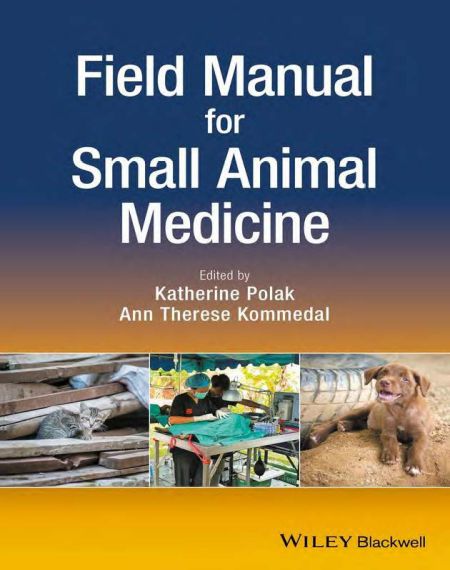Field Manual for Small Animal Medicine, Veterinary outreach and field medicine projects are expanding across international boundaries at a rapid pace. Projects span from small, local initiatives to robust country-wide programs operated by international animal welfare charities.
Field Manual for Small Animal Medicine

Both small- and large-scale disaster relief efforts involving animals are also becoming increasingly common. Although the majority of larger animal welfare organizations have operating manuals, guidance documents, and participant guidelines to follow, smaller groups often have few to no protocols or resources to use, other than a passion to help make a difference for the animals in a community. A Field Manual for Small Animal Medicine was born out of the editors’ passion for providing a resource for those working in this exciting and challenging field.
This manual is intended to assist veterinarians, veterinary technicians, veterinary students, and those involved in animal welfare projects with improving the health and welfare of animals in remote, rural, and international contexts. The contributing authors recognize the challenges faced when executing field surgical clinics, disaster response, and treatment of free-roaming dogs and cats in the face of limited resources. Like many other textbooks, some gold-standard recommendations are provided; however, this manual strives to also provide practical and cost–effective recommendations where the ideal solution may not be available. Readers will encounter highlighted tips and tricks that suggest innovative ways to best allocate resources to provide the best animal care possible.
Practicing veterinary medicine in limited-resourced environments requires a multitude of skills and training in a variety of subjects ranging from soft tissue surgery to emergency medicine. The topics chosen for inclusion in this manual were those deemed most critical for small animal practitioners, spay/neuter surgeons, shelter administrators and program managers. On an individual animal level, treatment protocols for commonly observed canine and feline diseases, euthanasia considerations, emergency medicine, and diagnostic techniques are dis-cussed. As fieldwork often consists of high-volume spay/neuter activities, information pertaining to humane handling and capture techniques for free-roaming animals, surgical asepsis, high-volume surgical techniques, and cost-effective anesthetic and pain management is included.
| PDF Size: 13 MB | Book Download Free |
Password: pdflibrary.net
